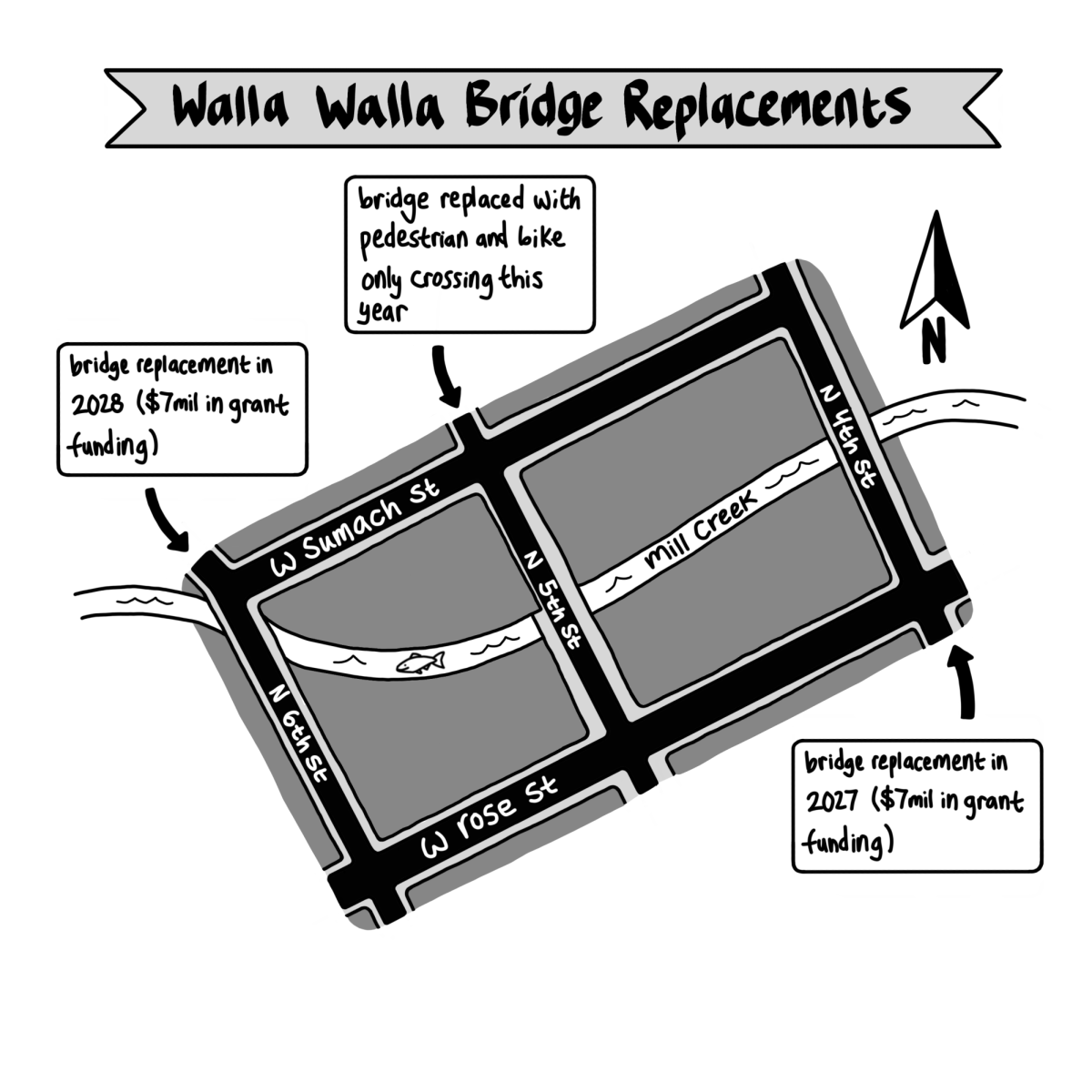Fake debris, simulated fire, smoke and actors occupied an empty tarmac at Walla Walla Regional Airport on the morning of Monday, Sept. 13.
These elements were all part of an emergency simulation being conducted by the Walla Walla County Emergency Management Department. The simulation involved an airplane which had to land on the airport runway immediately after a 6.2 magnitude earthquake created a chasm in the runway.
This was the second in a series of simulations and exercises planned for Walla Walla County by the Emergency Management Department. The goal was to test the emergency response plan of multiple agencies throughout the county, including the City of Walla Walla Fire Department, 911 Dispatch, Horizon Airlines, the Port of Walla Walla, Transportation Security Administration, the Walla Walla County Sheriff, Providence St. Marys Hospital and Walla Walla General Hospital. During the simulation, evaluators were stationed at multiple locations and had specific evaluation forms on which they evaluated the different agencies involved.
“The series [of simulations] started out with a table top simulation, and then we decided to do this full scale exercise,” said Gay Ernst, the director of the Emergency Management Department. “Part of it was because the Federal Aviation Administration requires the firefighters who are responsible for protection of the airport to exercise in full-scale fashion every three years. So we were due.”
The Emergency Management Department decided to base the series of exercises on earthquake scenarios due to the lack of predictability of earthquakes and the significant chance of an earthquake in Walla Walla County.
“Other emergencies and disasters are easier to predict,” said Abbie VanDonge, assistant director of the Emergency Management Department. “An earthquake is one of those emergencies where you really have very little to no warning before it happens . . . I think it’s hard to educate people because we don’t have them every day and people believe that we are safe here and will never have them, and it’s kind of hard to test responders on how to respond because you never have to respond to an earthquake.”
According to Whitman College Professor of Geology Kevin Pogue, the large potential for an earthquake exists due to the Wallula fault zone.
“There hasn’t been enough research done to come up with a probability forecast [for an earthquake],” he said. “We do know that there was a damaging earthquake in 1936, centered near Milton-Freewater on the Wallula fault, and it was approximately magnitude six. Since that time there have been a whole bunch of earthquakes that have been felt but they are low, magnitude four at the most. Potentially we could have a magnitude six earthquake again.”
But Pogue questions whether an airplane being unable to land is a likely scenario the county would face after an earthquake.
“When I think of bad things that would happen if we had an earthquake, damage to the airport runway doesn’t even appear on my radar screen,” Pogue said. “The chances of having an earthquake large enough that it would damage the runway in such a way that a plane couldn’t land would be pretty small . . . The most likely catastrophic things that could happen in Walla Walla is that there would be significant damage to the un-reinforced masonry buildings downtown.”
While the scenario may be unlikely, VanDonge highlighted that the situation was created around the purpose of testing the different agencies that would need to react in any sort of emergency situation.
“There is a lot of coordinating with [the different agencies] initially: talking about their requirements, what they want, if they want to be evaluated, what they are required to be evaluated and tested on, and then just creating a scenario based around that,” she said.
Walla Walla Airport Manager Jennifer Skoglund concurred.
“For FAA purposes, they want to see the response of our aircraft response and firefighting,” she said. “So that has always been the same: you have a plane down and how do you respond to it but to get to the point that simulation can be different?”
Ultimately, those involved with the simulation were pleased with the result.
“I think the overall consensus was that the exercise went very well,” said Ernst. “Not because everything went right but because some things did go wrong, so that we can identify those things and have an opportunity to fix them before we have another exercise or an actual incident.”
Skoglund felt that the airport benefited greatly from the exercise.
“It made me feel very confident that in the event of an emergency all those involved would handle the situation professionally and expertly,” she said. “I was very impressed with all the organizations that were involved and it was a well thought-out event.”








